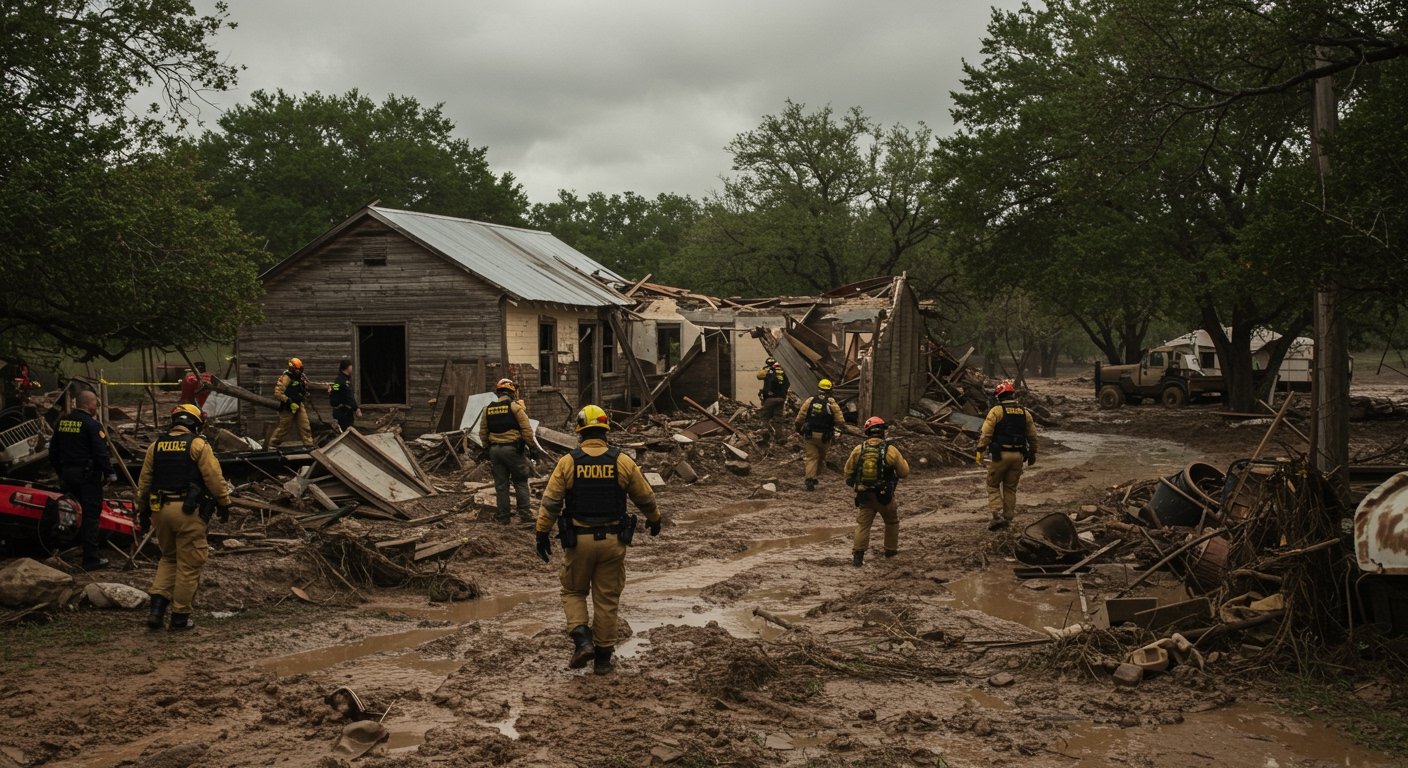Historic Texas Flash Floods Leave Trail of Devastation
TEXAS HILL COUNTRY – A catastrophic flash flood event has struck the Texas Hill Country, resulting in a climbing death toll and leaving dozens of individuals unaccounted for as of July 6, 2025. The unprecedented surge of water has devastated communities, sweeping away homes, businesses, and critical infrastructure.
Official figures confirm at least 52 fatalities, a grim count that includes 15 children. However, the true scale of the tragedy may be significantly larger. Competing reports underscore the chaotic nature of the disaster, with one source stating 68 confirmed deaths, comprising 40 adults and 28 children, as of Sunday. Another report tragically cites at least 79 deaths also as of Sunday. The discrepancy highlights the immense challenge facing recovery efforts in the vast affected area.
The Relentless Force of Nature
The flash flood, described as historic, was characterized by its suddenness and intensity. The Guadalupe River, a central waterway in the region, experienced a dramatic and rapid rise, with one report noting a staggering 26-foot increase in under an hour. This unprecedented surge offered little to no warning, overwhelming everything in its path.
The destructive force of the water swept away numerous structures. Homes were ripped from their foundations, and critical roadways became impassable. Recreational sites were also hit hard, including Camp Mystic in Kerr County, which was reportedly swept away, raising concerns about the potential loss of life at the popular location.
Ongoing Search and Rescue Operations
Amidst the widespread destruction, search and rescue operations are continuing around the clock. Authorities and volunteers are combing through debris and along riverbanks in a desperate effort to locate the dozens of individuals who remain missing. The scale of the rescue effort has been significant, with over 850 people already pulled to safety from perilous situations.
The human toll of the disaster extends beyond the confirmed fatalities. Families are enduring an agonizing wait for news of their loved ones, their desperation palpable as search teams navigate challenging terrain and conditions. The focus remains on locating survivors, but as time passes, hopes dim.
Massive Response Effort
The response to the disaster has mobilized extensive resources from across the state and beyond. Over 400 first responders are actively involved in the search and rescue operations. These personnel represent more than 20 different agencies, illustrating the multi-jurisdictional nature of the emergency and the unified effort required to address its devastating impact.
In recognition of the severity of the flooding, Governor Greg Abbott signed a disaster declaration for the affected areas, freeing up state resources to aid in relief and recovery. Further underscoring the gravity of the situation, former President Trump also signed a major disaster declaration specifically for Kerr County, a region particularly hard-hit, enabling federal assistance.
Historical Echoes of Past Disasters
The scale and suddenness of this event have drawn comparisons to past tragedies in the region. Notably, the severity of the flooding has been likened to the 1987 disaster near Comfort, a grim reminder of the vulnerability of communities located along the rapidly fluctuating river systems of the Texas Hill Country.
As search operations persist, the region faces a long and challenging path to recovery. The immediate priority remains locating the missing and supporting the affected families, while the long-term effort will involve rebuilding infrastructure and lives shattered by the historic floodwaters.






